1. Introduction With the rapid development of China's telecommunications industry, the scale of communication networks is continuously expanding, the types and number of communication base stations that need to be operated and maintained have been greatly improved, and the stability and reliability of communication base station power supplies have also been raised. In order to improve the overall quality of the Communication King, save manpower resources and energy consumption, China has proposed several requirements for the monitoring and management of communication power supply equipment and the environment.
To solve this problem, HDIE-C series current sensors realize centralized monitoring of communication power sources to realize real-time management of mobile communication base stations. The management personnel can manage the working status of each communication base station at the remote centralized control center. Technicians can perform system maintenance on the base station.
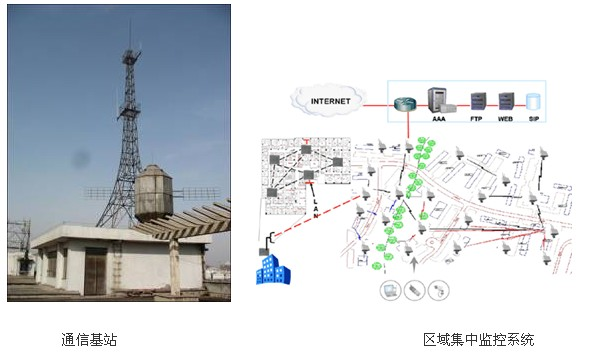
2. How the Open-Loop Hall Sensor Works Since the discovery of the Hall effect by American physicist Edwin Herbert Hall in 1879, Hall technology has been increasingly used in various fields of industrial control. With the development of the component process technology, Hall current and voltage sensors developed and applied by Hall devices have achieved good applications in all walks of life.
1) Hall effect and Hall device Hall effect is the theoretical basis of Hall technology application. When a semiconductor chip with a small current is placed in a magnetic field (Fig. 1), carriers in the semiconductor are affected by Loren. The effect of Zircon deflects and causes a potential difference between the two sides of the semiconductor. This potential difference is the Hall voltage VH, and VH is proportional to the magnetic induction B and the control current IC. Theoretically, the relation (1) is derived.
VH=(RH/d)×B×IC(1)
In the formula: B is the magnetic induction intensity;
IC is the control current;
RH is the Hall coefficient;
d is the thickness of the semiconductor.
In equation (1), if the control current IC remains unchanged, under certain conditions, the magnitude of magnetic induction can be calculated by measuring the Hall voltage, thus establishing the connection between the magnetic field and the voltage signal. According to this relation, a semiconductor device for measuring a magnetic field, a Hall device, has been developed.
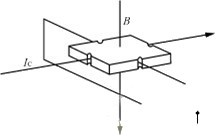
Hall Effect Principle 2) How Open Loop Hall Current Sensors Work
Hall-open-loop principle HDIE-C45 outline drawing When the primary current Ip passes through the polymagnetic ring with air gap, the Hall element placed in the air gap will detect the magnetic flux proportional to the current and outputs it. With a small voltage signal, the voltage signal is amplified by the amplifier, and the voltage waveform corresponding to the phase of the primary current signal can be output. This waveform can truly reflect the magnitude and variation of the primary current.
The application of open-loop Hall current sensor is very extensive, mainly has the following important features:
1), the entire range has a very high linearity.
2), high degree of integration, excellent temperature characteristics and long-term working stability, so that the transmitter is free of regular checks.
3) High accuracy.
4) The structure is simple and strong, and the shock resistance is good. 5) The overload capacity is strong.
6), opening, closing a variety of size options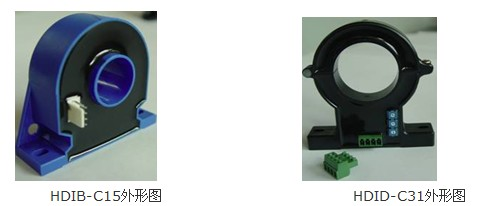
3. The application of the open-loop Hall current sensor in the communication base station is to better monitor the working status of all the equipments in the communication base station. Many adopt the traditional transformer monitoring AC and diverter to monitor the direct current, with the change of technology. The continuous increase in demand has led to the long-term monitoring of the overall working conditions of the base stations. The current sensors are correspondingly generated under this condition, and traditional shunts and transformers can no longer meet existing requirements.
Generally, two monitoring methods are adopted during design:
1) Monitoring the equipment in the base station separately The internal equipment of the base station generally includes ventilation equipment, communication power supply, battery pack, external network distribution system, etc. The bus output current of each equipment is monitored separately, and the standard signal is generally DC4-20mA as an output, the power supply can be powered by the DC power supply inside the base station, DC12V, DC15-24V can be, all sensor output signals are all connected to the wireless acquisition module, do remote transmission, a specific monitoring within the region The center conducts overall monitoring. At the same time, the relevant inspectors in the area can directly understand the working status of the equipment in each base station through the mobile phone, as follows:
For single device monitoring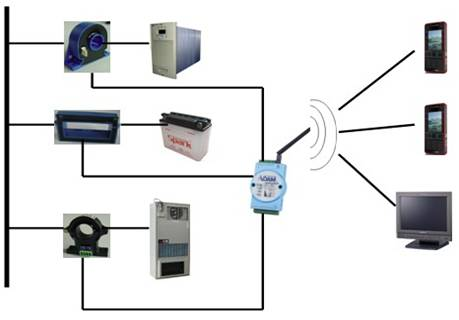
2) For the monitoring of the overall power line, many customers consider the cost of monitoring during the design and reconstruction. This will use the monitoring of the total external network power distribution system, so that there will be a partial reduction in the cost of the standard signal DC4-20mA As an output, the power supply can be powered by the internal DC power supply of the base station. DC12V and DC15-24V are available. The output signals of all sensors are all connected to the wireless acquisition module for remote transmission, and are used as a whole in a specific monitoring center in the area. The monitoring and the related inspectors in the area can directly understand the working status of the equipment in each base station through the mobile phone, as follows:
Monitoring both ends of input and output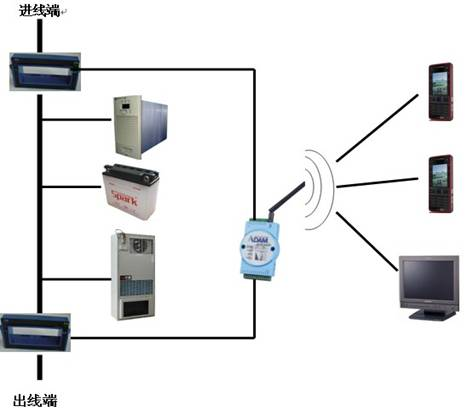
In the above two modes, the latter is currently the most common. When designing a new base station or needing to reconstruct an existing base station, it is necessary to pay attention to the following points when selecting a current sensor:
1) See if the equipment in the site has been installed, the sensor has open and closed points, the accuracy of the closed port is high, the precision of the opening is poor, and the opening needs to be selected in the case of a line that cannot be broken, and it is also necessary to consider the device later. Is it possible to disconnect the sensor during maintenance?
2) When selecting the sensor, pay attention to the environment used, whether there is a high temperature, low temperature, and high humidity environment, and it is necessary to explain the environmental conditions to the salesperson;
3) When monitoring the DC current sensor and voltage sensor of the battery pack, it is necessary to pay attention to whether or not it is necessary to monitor the reverse current and voltage because the battery has a problem of charge and discharge.
4) Select a current sensor that is close to the size of the cable or bronze, and the measurement will be better.
4. Concluding remarks Along with the continuous updating of products, for the increase of overall monitoring requirements in the region, the reduction of personnel costs, transformers and other products have gradually been replaced by sensors, and in the special environment of high temperature, low temperature, high humidity, etc. Crucial role
To solve this problem, HDIE-C series current sensors realize centralized monitoring of communication power sources to realize real-time management of mobile communication base stations. The management personnel can manage the working status of each communication base station at the remote centralized control center. Technicians can perform system maintenance on the base station.

2. How the Open-Loop Hall Sensor Works Since the discovery of the Hall effect by American physicist Edwin Herbert Hall in 1879, Hall technology has been increasingly used in various fields of industrial control. With the development of the component process technology, Hall current and voltage sensors developed and applied by Hall devices have achieved good applications in all walks of life.
1) Hall effect and Hall device Hall effect is the theoretical basis of Hall technology application. When a semiconductor chip with a small current is placed in a magnetic field (Fig. 1), carriers in the semiconductor are affected by Loren. The effect of Zircon deflects and causes a potential difference between the two sides of the semiconductor. This potential difference is the Hall voltage VH, and VH is proportional to the magnetic induction B and the control current IC. Theoretically, the relation (1) is derived.
VH=(RH/d)×B×IC(1)
In the formula: B is the magnetic induction intensity;
IC is the control current;
RH is the Hall coefficient;
d is the thickness of the semiconductor.
In equation (1), if the control current IC remains unchanged, under certain conditions, the magnitude of magnetic induction can be calculated by measuring the Hall voltage, thus establishing the connection between the magnetic field and the voltage signal. According to this relation, a semiconductor device for measuring a magnetic field, a Hall device, has been developed.

Hall Effect Principle 2) How Open Loop Hall Current Sensors Work

Hall-open-loop principle HDIE-C45 outline drawing When the primary current Ip passes through the polymagnetic ring with air gap, the Hall element placed in the air gap will detect the magnetic flux proportional to the current and outputs it. With a small voltage signal, the voltage signal is amplified by the amplifier, and the voltage waveform corresponding to the phase of the primary current signal can be output. This waveform can truly reflect the magnitude and variation of the primary current.
The application of open-loop Hall current sensor is very extensive, mainly has the following important features:
1), the entire range has a very high linearity.
2), high degree of integration, excellent temperature characteristics and long-term working stability, so that the transmitter is free of regular checks.
3) High accuracy.
4) The structure is simple and strong, and the shock resistance is good. 5) The overload capacity is strong.
6), opening, closing a variety of size options

3. The application of the open-loop Hall current sensor in the communication base station is to better monitor the working status of all the equipments in the communication base station. Many adopt the traditional transformer monitoring AC and diverter to monitor the direct current, with the change of technology. The continuous increase in demand has led to the long-term monitoring of the overall working conditions of the base stations. The current sensors are correspondingly generated under this condition, and traditional shunts and transformers can no longer meet existing requirements.
Generally, two monitoring methods are adopted during design:
1) Monitoring the equipment in the base station separately The internal equipment of the base station generally includes ventilation equipment, communication power supply, battery pack, external network distribution system, etc. The bus output current of each equipment is monitored separately, and the standard signal is generally DC4-20mA as an output, the power supply can be powered by the DC power supply inside the base station, DC12V, DC15-24V can be, all sensor output signals are all connected to the wireless acquisition module, do remote transmission, a specific monitoring within the region The center conducts overall monitoring. At the same time, the relevant inspectors in the area can directly understand the working status of the equipment in each base station through the mobile phone, as follows:
For single device monitoring

2) For the monitoring of the overall power line, many customers consider the cost of monitoring during the design and reconstruction. This will use the monitoring of the total external network power distribution system, so that there will be a partial reduction in the cost of the standard signal DC4-20mA As an output, the power supply can be powered by the internal DC power supply of the base station. DC12V and DC15-24V are available. The output signals of all sensors are all connected to the wireless acquisition module for remote transmission, and are used as a whole in a specific monitoring center in the area. The monitoring and the related inspectors in the area can directly understand the working status of the equipment in each base station through the mobile phone, as follows:
Monitoring both ends of input and output

In the above two modes, the latter is currently the most common. When designing a new base station or needing to reconstruct an existing base station, it is necessary to pay attention to the following points when selecting a current sensor:
1) See if the equipment in the site has been installed, the sensor has open and closed points, the accuracy of the closed port is high, the precision of the opening is poor, and the opening needs to be selected in the case of a line that cannot be broken, and it is also necessary to consider the device later. Is it possible to disconnect the sensor during maintenance?
2) When selecting the sensor, pay attention to the environment used, whether there is a high temperature, low temperature, and high humidity environment, and it is necessary to explain the environmental conditions to the salesperson;
3) When monitoring the DC current sensor and voltage sensor of the battery pack, it is necessary to pay attention to whether or not it is necessary to monitor the reverse current and voltage because the battery has a problem of charge and discharge.
4) Select a current sensor that is close to the size of the cable or bronze, and the measurement will be better.
4. Concluding remarks Along with the continuous updating of products, for the increase of overall monitoring requirements in the region, the reduction of personnel costs, transformers and other products have gradually been replaced by sensors, and in the special environment of high temperature, low temperature, high humidity, etc. Crucial role
Engine Parts,Engine Mounting,Small Engine Parts,Crankshaft And Camshaft
Wenzhou Huaming Automotive Components Co.,ltd. , https://www.dqz-duchiez.com
